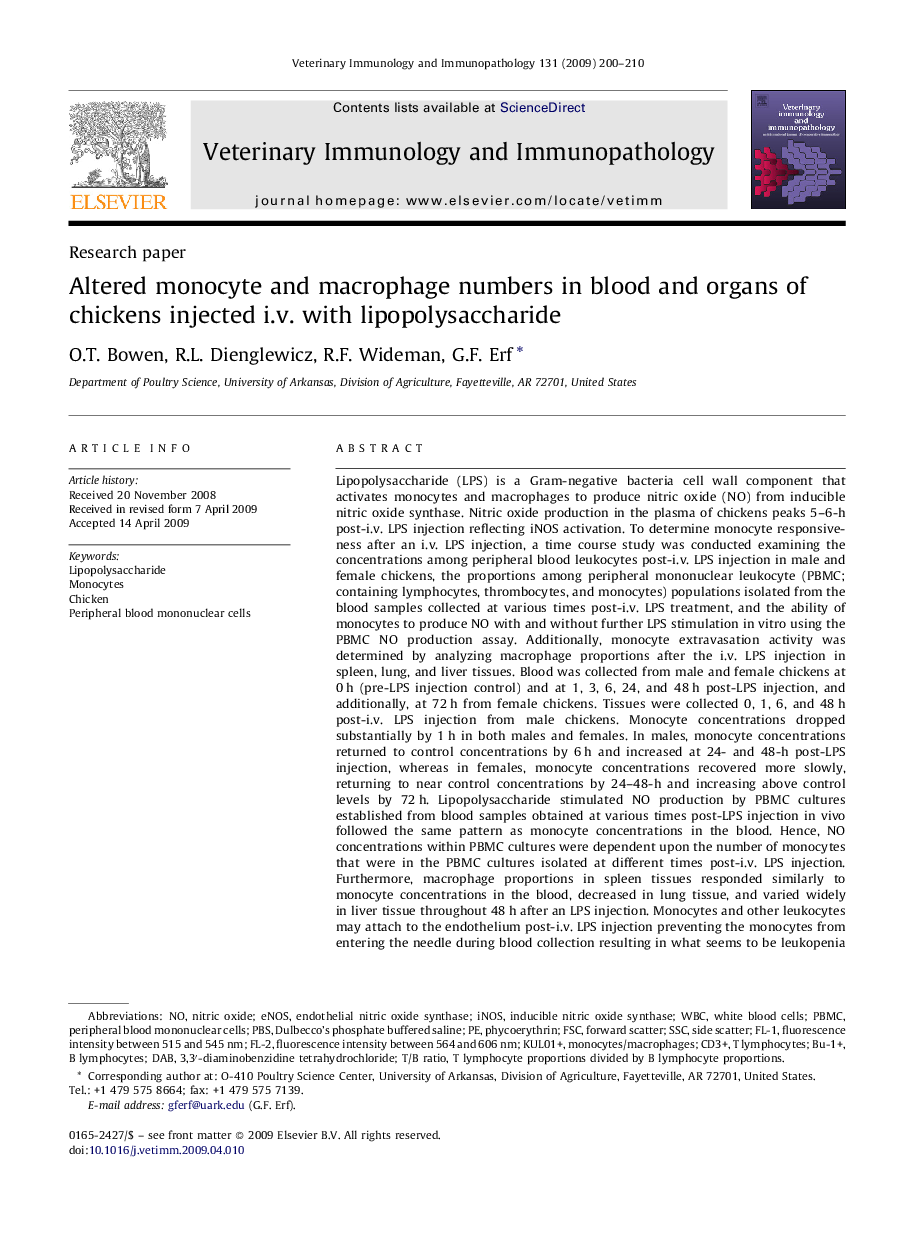| کد مقاله | کد نشریه | سال انتشار | مقاله انگلیسی | نسخه تمام متن |
|---|---|---|---|---|
| 2462566 | 1555084 | 2009 | 11 صفحه PDF | دانلود رایگان |

Lipopolysaccharide (LPS) is a Gram-negative bacteria cell wall component that activates monocytes and macrophages to produce nitric oxide (NO) from inducible nitric oxide synthase. Nitric oxide production in the plasma of chickens peaks 5–6-h post-i.v. LPS injection reflecting iNOS activation. To determine monocyte responsiveness after an i.v. LPS injection, a time course study was conducted examining the concentrations among peripheral blood leukocytes post-i.v. LPS injection in male and female chickens, the proportions among peripheral mononuclear leukocyte (PBMC; containing lymphocytes, thrombocytes, and monocytes) populations isolated from the blood samples collected at various times post-i.v. LPS treatment, and the ability of monocytes to produce NO with and without further LPS stimulation in vitro using the PBMC NO production assay. Additionally, monocyte extravasation activity was determined by analyzing macrophage proportions after the i.v. LPS injection in spleen, lung, and liver tissues. Blood was collected from male and female chickens at 0 h (pre-LPS injection control) and at 1, 3, 6, 24, and 48 h post-LPS injection, and additionally, at 72 h from female chickens. Tissues were collected 0, 1, 6, and 48 h post-i.v. LPS injection from male chickens. Monocyte concentrations dropped substantially by 1 h in both males and females. In males, monocyte concentrations returned to control concentrations by 6 h and increased at 24- and 48-h post-LPS injection, whereas in females, monocyte concentrations recovered more slowly, returning to near control concentrations by 24–48-h and increasing above control levels by 72 h. Lipopolysaccharide stimulated NO production by PBMC cultures established from blood samples obtained at various times post-LPS injection in vivo followed the same pattern as monocyte concentrations in the blood. Hence, NO concentrations within PBMC cultures were dependent upon the number of monocytes that were in the PBMC cultures isolated at different times post-i.v. LPS injection. Furthermore, macrophage proportions in spleen tissues responded similarly to monocyte concentrations in the blood, decreased in lung tissue, and varied widely in liver tissue throughout 48 h after an LPS injection. Monocytes and other leukocytes may attach to the endothelium post-i.v. LPS injection preventing the monocytes from entering the needle during blood collection resulting in what seems to be leukopenia in blood and in PBMC cultures attenuating NO production in PBMC cultures. Furthermore, monocyte differentiation and recruitment from the bone marrow is a likely contributor to the reconstitution and rise of monocyte concentrations in blood samples post-i.v. LPS injection.
Journal: Veterinary Immunology and Immunopathology - Volume 131, Issues 3–4, 15 October 2009, Pages 200–210